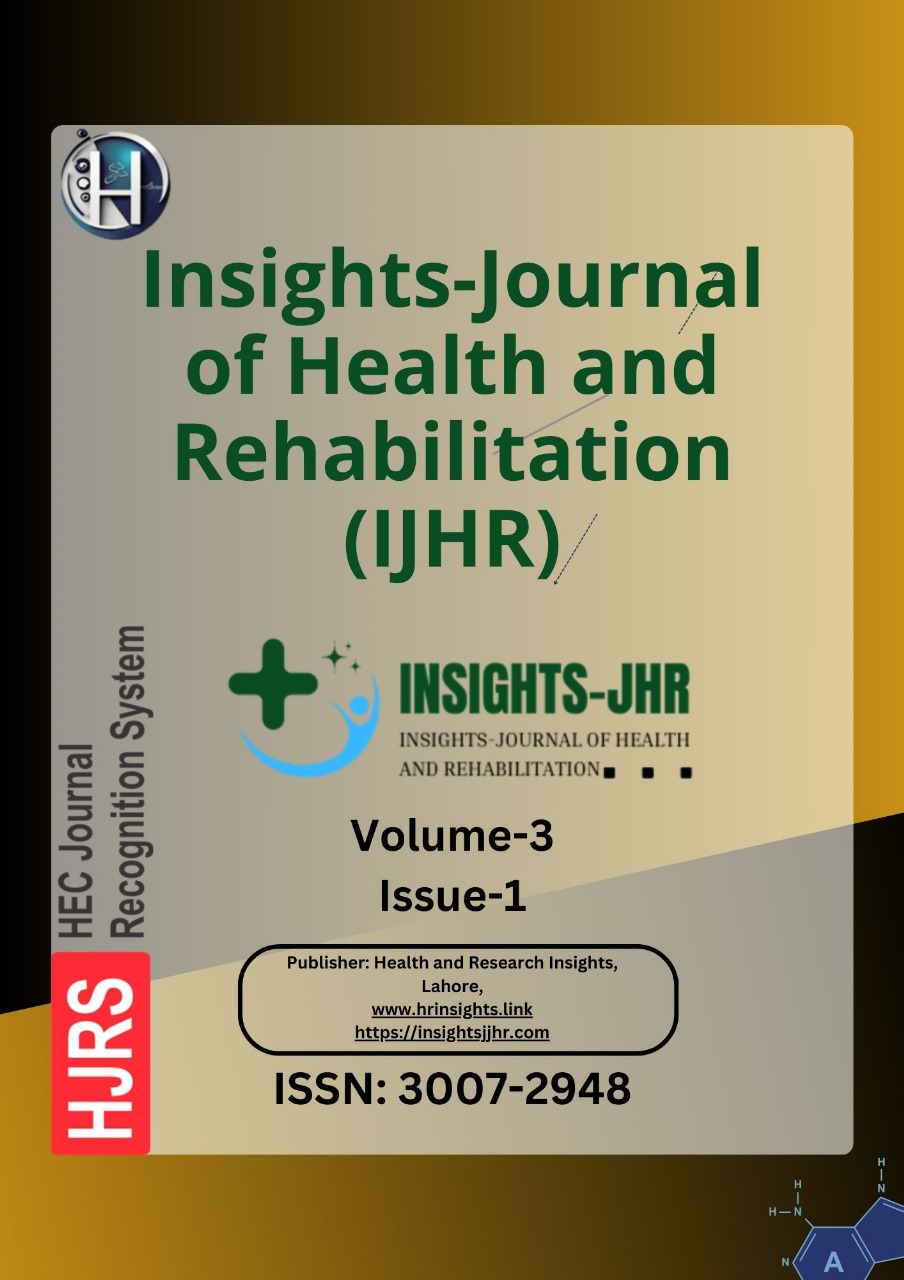EFFECTS OF CORE STABILITY EXERCISES ON STATIC AND DYNAMIC BALANCE IN CHILDREN WITH DEVELOPMENTAL DELAY
DOI:
https://doi.org/10.71000/p51gp437Keywords:
Balance, core stability exercises, developmental delay, motor function, pediatric rehabilitation, postural control, static and dynamic balanceAbstract
Background: Developmental delay affects a child's ability to achieve motor, cognitive, and psychosocial milestones, often leading to impaired balance and functional limitations. Weakened core muscles contribute to poor postural control, increasing the risk of falls and difficulties in performing daily activities. While conventional therapy addresses motor impairments, targeted interventions focusing on core stability require further investigation for optimizing balance rehabilitation in children with developmental delay.
Objective: To evaluate the effects of core stability exercises on static and dynamic balance in children with developmental delay and compare them with conventional therapy.
Methods: A randomized controlled trial was conducted over six months with 30 children aged 6–12 years, meeting specific inclusion criteria. Participants were randomly assigned to either an experimental group receiving an 8-week structured core stability exercise program or a control group undergoing conventional therapy. Balance assessments were conducted pre- and post-intervention using the Pediatric Balance Scale (PBS), Timed Up and Go (TUG) test, and Pediatric Reach Test (PRT). Statistical analyses were performed using Wilcoxon Signed-Rank and Mann-Whitney U tests, with a significance level set at p<0.05.
Results: Both groups showed significant within-group improvement in PBS (31.77 ± 8.87 to 36.60 ± 8.78, p<0.05), TUG (33.70 ± 14.29 to 29.60 ± 14.28, p<0.05), and PRT (16.60 ± 5.01 to 19.40 ± 4.96, p<0.05). However, between-group analysis showed no statistically significant difference (p>0.05), indicating that both interventions were equally effective.
Conclusion: Core stability exercises and conventional therapy significantly improve balance in children with developmental delay, with no superiority of one intervention over the other. Future research should explore long-term outcomes and combined rehabilitation approaches for optimizing balance training.
Downloads
Published
Issue
Section
License
Copyright (c) 2025 Ammara Arooj, Aitzaz Azam, Maria Amjad, Tooba Tanveer, Zara Tariq, Fariha Wahab, Fatima Yasin Khan, Qandeel Arshad (Author)

This work is licensed under a Creative Commons Attribution-NonCommercial-NoDerivatives 4.0 International License.







